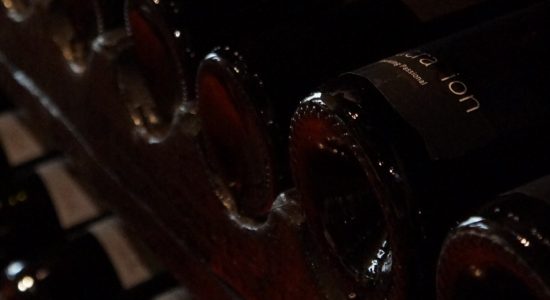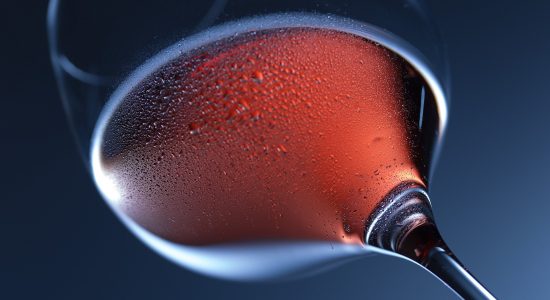Can You Really Go Blind From Drinking Homemade Wine?

Making good wine is a science that requires close attention to detail. Fermentation must be controlled, cleanliness needs to be a priority, and ingredients must be high quality for the wine to be tasty and safe to drink. There are many myths about the dangers of making and drinking homemade wine, including that you risk blindness when you consume it.
You can’t really go blind from drinking homemade wine. Fermentation of sugar creates ethyl alcohol, which is often confused with methyl alcohol. Methyl alcohol can make you blind, but ethyl alcohol can’t.
In the rest of this article, I’ll explain why you don’t have to worry about going blind when you’re enjoying homemade wine. I’ll also suggest a reason why this myth became so prevalent. Finally, I’ll describe the best way to safely make delicious wine you can enjoy without concerns or worries.
Why Drinking Homemade Wine Won’t Make You Go Blind
The myth of going blind when drinking homemade wine emerged because ethyl alcohol, which is the type of alcohol created in winemaking, sounds similar to methyl alcohol, which will make you go blind upon consumption.
Wine is made by allowing active yeast to feed on sugar and convert it to ethyl alcohol and carbon dioxide. Throughout this process, the amount of sugar decreases, and the amount of alcohol increases.
Ethyl alcohol, also known as ethanol, is produced by fermentation and is the type of alcohol we drink in alcoholic beverages. This means that the alcohol you’re producing when you make wine via fermentation at home is the same alcohol you’d find in a bottle of wine in the store.
Most importantly, it won’t make you blind.
The myth that homemade alcohol can make you blind likely came about because “ethyl alcohol” and “methyl alcohol” sound incredibly similar. Unlike ethyl alcohol, consuming methyl alcohol is extremely dangerous, as just a small amount of ingestion can cause neurological dysfunction and blindness.
If you follow proper wine-making procedures and use clean and high-quality ingredients, you shouldn’t have to worry about blindness or any other health issues or dysfunction resulting from consuming the wine.
The following table outlines the differences between these alcohols:
| Characteristic | Ethyl Alcohol (Ethanol) | Methyl Alcohol (Methanol) |
| Formula | C2H5OH | CH3OH |
| Acidity | Weak | Strong |
| Chemical Structure | Two carbon atoms, hydroxyl group | One carbon atom, hydroxyl group |
| Boiling Point | 78.37℃ (173.07℉) | 64.7℃ (148.46 ℉) |
| Production | Fermentation of food, germination of plants | Synthetically processed, produced by anaerobic bacteria |
| Uses | Ingredient in alcoholic beverages | Ingredient to produce other chemicals |
| Toxicity | Low enough that it can be safely used in beverages | Toxic, can cause permanent blindness |
They may sound similar, but ethyl alcohol and methyl alcohol are very different substances, so it’s important not to get them mixed up, especially when making homemade wine.
How To Safely Make Wine
Drinking homemade wine isn’t dangerous if you make it properly and with high-quality ingredients and materials. If you’re a beginner, it may be useful to start by purchasing a wine-making kit, so you’re equipped with the materials you need.
Follow these steps to make delicious and safe wine:
- Clean all equipment with hot water and a long-handled stiff brush. This keeps everything sterile so your wine is safe to drink.
- Prepare your fruit by removing stems and washing thoroughly. Again, you want everything clean so as to not introduce any pathogens to your wine.
- Crush the fruit so the juice is free for fermentation. You can crush grapes and berries by spreading them in the bottom of a saucepan and using a rolling pin. For larger and more solid fruits, crush them in a food chopper.
- Sterilize the fruit with ½ tsp (2.84 g) of potassium metabisulfite per pint (437.8 ml) of juice. Mix thoroughly, cover the container with cheesecloth, and wait for at least four hours.
- Activate the yeast by dissolving it in the juice. Cover the fermentor with cheesecloth and store it in a warm place.
- Allow the pulp to ferment for three to seven days. You’ll want to replace the cover frequently to protect the concoction from vinegar flies.
- Strain the pulp and solids into a saucepan. If you don’t have a fine mesh strainer, you can place a coffee filter in a normal strainer to catch the pulp.
- Use the Pearson Square to determine how much sugar you need to raise the sugar level to approximately 18%.
- Dissolve the sugar in water and bring the sugar water to a boil. Then remove from heat and put the liquid in a place with a cool temperature.
- Add some sugar syrup to the juice and swirl it around so the sugar is evenly distributed. Try not to add too much. Otherwise, you risk overflowing or killing the yeast, which would result in a low-alcohol strength wine.
- Seal the fermentor with a fermentation lock and leave it. After a couple of days, carbon dioxide bubbles will form and emerge from the fermentation lock, which means the concoction is fermenting.
- Remove the lid and add more sugar syrup every four or five days.
- Fermentation will take about a month. The following video describes what happens if you allow the substance to ferment for too long: https://www.youtube.com/watch?v=X6h29IOOTOk&list=PLSvfBeptcDUSAEZGaucw-uGYoCrcIEnw0&index=5
- Rack the wine to separate the sediments made of dead yeast cells from the wine. Chill the wine after racking to encourage the natural clarification process.
- Bottle the wine. Before siphoning the wine into bottles, dissolve an ⅛ tsp (0.43 g) of potassium metabisulfite for every 3 gallons (11.4 L) of wine. This helps protect against bacterial spoilage.
- Use a hand corker to drive corks into wine bottles. Label the bottle with information about the flavor, ingredients, clarity, and more.
- Keep track of everything you did so you can improve the process next time. Store the wine in a dry place at a temperature of 60℉ (15.56℃).
Conclusion
Homemade wine is made by allowing active yeast to feed on sugar from fruits and convert it to ethyl alcohol and carbon dioxide. Ethyl alcohol is safe for consumption, but because it sounds so similar to methyl alcohol, a common rumor is that drinking homemade wine can blind you. Rest assured, this isn’t the case.






